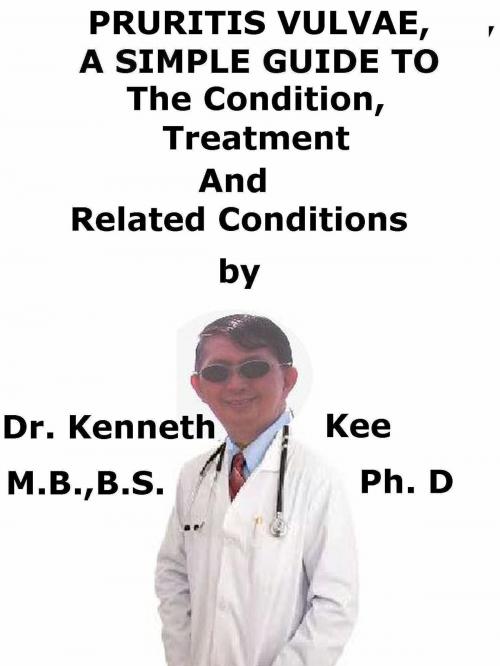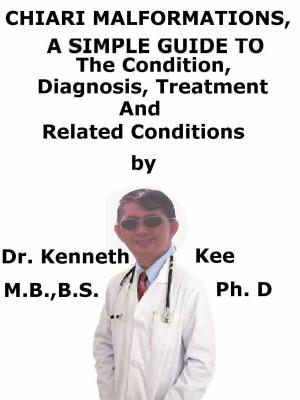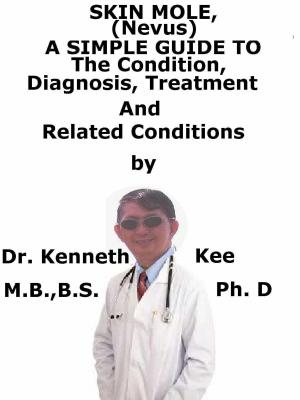Pruritis Vulvae, A Simple Guide To The Condition, Treatment And Related Conditions
Nonfiction, Health & Well Being, Medical, Specialties, Gynecology & Obstetrics, Health, Women&| Author: | Kenneth Kee | ISBN: | 9781370477661 |
| Publisher: | Kenneth Kee | Publication: | October 20, 2016 |
| Imprint: | Smashwords Edition | Language: | English |
| Author: | Kenneth Kee |
| ISBN: | 9781370477661 |
| Publisher: | Kenneth Kee |
| Publication: | October 20, 2016 |
| Imprint: | Smashwords Edition |
| Language: | English |
Ode To Pruritis Vulvae
Pruritus vulvae is persistent vulval itching
Some women find pruritus vulvae embarrassing
It can make them feel irritated and distressed
It may interfere in their sex life and make them depressed
The cause of Pruritus vulvae may be related to an allergic reaction
It is also associated with chronic fungal or yeast infection
In younger females it may be associated with germs and poor hygiene
They should wash the vulvae thoroughly, keep dry and clean
The goal of treatment is to stop the itch and avoid scratching.
Wipe front to back after urinating or defecating
Avoid scented soaps and wear loose 100% cotton underwear.
Treat any infections, bacterial or fungal and lubricate any atrophic vulvae.
-An original poem by Kenneth Kee
A female with pruritus vulvae has persistent itching of the vulva or external genitals.
Pruritus vulvae is a symptom, not a condition in itself.
The vulva is the area of skin just outside the vagina.
Most women experience a slight vulval itch now and again.
However pruritus vulvae mean the itch is persistent and causes distress.
The itch may be particularly bad at night and may disturb the sleep.
Allergies, chemicals, infections, or menopause may trigger pruritus vulvae.
Pruritus vulvae occur in about 10 percent of women at some time in their lives.
Causes of pruritus vulvae include:
1. Allergic reaction
2. Chemical vaginitis
3. Eczema
4. Genital warts
5. Bartholin's cyst
6. Menopause
7. Pregnancy
8. Psoriasis
9. Seborrhea
10. Sexually transmitted disease
11. Vaginal Infection
12. Vulval cancer
13. Urinary incontinence
14. Skin infection:
15. Yeast infection
16. Lice
17. Pinworms
18. Poor hygiene in prepuberty
19. Vaginal atrophy in menopause
20. Lichen Sclerosus
The Diagnosis is by:
a. Blisters on the vulva
b. Lice around the vulva
c. Pinworms on the vulva
d. Rash on the vulva
e. Redness of the vulva
f. Swelling of the vulva
g. Vaginal discharge
Skin biopsy and Micro-organisms cultures will determine the cause.
The treatment for pruritus vulvae depends on the cause.
Treatment for pruritus vulvae may be:
1. warm baths,
2. gentle cleansing of the vulva,
3. corticosteroid creams or lotions and
4. oral antihistamines for itching
5. Loose panties
TABLE OF CONTENT
Introduction
Chapter 1 Pruritis Vulvae
Chapter 2 More about Pruritis Vulvae
Chapter 3 Treatment of Pruritis Vulvae
Chapter 4 Pruritis and Systemic Disease
Chapter 5 Eczema
Chapter 6 Threadworms
Chapter 7 Scabies
Chapter 8 Candidiasis
Epilogue
Ode To Pruritis Vulvae
Pruritus vulvae is persistent vulval itching
Some women find pruritus vulvae embarrassing
It can make them feel irritated and distressed
It may interfere in their sex life and make them depressed
The cause of Pruritus vulvae may be related to an allergic reaction
It is also associated with chronic fungal or yeast infection
In younger females it may be associated with germs and poor hygiene
They should wash the vulvae thoroughly, keep dry and clean
The goal of treatment is to stop the itch and avoid scratching.
Wipe front to back after urinating or defecating
Avoid scented soaps and wear loose 100% cotton underwear.
Treat any infections, bacterial or fungal and lubricate any atrophic vulvae.
-An original poem by Kenneth Kee
A female with pruritus vulvae has persistent itching of the vulva or external genitals.
Pruritus vulvae is a symptom, not a condition in itself.
The vulva is the area of skin just outside the vagina.
Most women experience a slight vulval itch now and again.
However pruritus vulvae mean the itch is persistent and causes distress.
The itch may be particularly bad at night and may disturb the sleep.
Allergies, chemicals, infections, or menopause may trigger pruritus vulvae.
Pruritus vulvae occur in about 10 percent of women at some time in their lives.
Causes of pruritus vulvae include:
1. Allergic reaction
2. Chemical vaginitis
3. Eczema
4. Genital warts
5. Bartholin's cyst
6. Menopause
7. Pregnancy
8. Psoriasis
9. Seborrhea
10. Sexually transmitted disease
11. Vaginal Infection
12. Vulval cancer
13. Urinary incontinence
14. Skin infection:
15. Yeast infection
16. Lice
17. Pinworms
18. Poor hygiene in prepuberty
19. Vaginal atrophy in menopause
20. Lichen Sclerosus
The Diagnosis is by:
a. Blisters on the vulva
b. Lice around the vulva
c. Pinworms on the vulva
d. Rash on the vulva
e. Redness of the vulva
f. Swelling of the vulva
g. Vaginal discharge
Skin biopsy and Micro-organisms cultures will determine the cause.
The treatment for pruritus vulvae depends on the cause.
Treatment for pruritus vulvae may be:
1. warm baths,
2. gentle cleansing of the vulva,
3. corticosteroid creams or lotions and
4. oral antihistamines for itching
5. Loose panties
TABLE OF CONTENT
Introduction
Chapter 1 Pruritis Vulvae
Chapter 2 More about Pruritis Vulvae
Chapter 3 Treatment of Pruritis Vulvae
Chapter 4 Pruritis and Systemic Disease
Chapter 5 Eczema
Chapter 6 Threadworms
Chapter 7 Scabies
Chapter 8 Candidiasis
Epilogue















